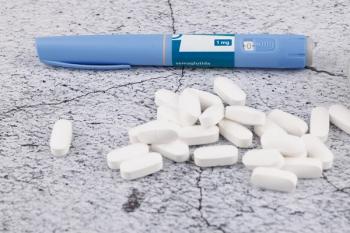
Q&A: Douglas Hoey on How Rite Aid’s Closure Will Impact Independent Pharmacies
Douglas Hoey, CEO of NCPA, discusses what independent pharmacies can do to handle an influx of patients and what the chain’s situation means for the pharmacy landscape.
As Rite Aid has filed its second Chapter 11 bankruptcy with plans to close or sell all of its locations, what will the impact be on independent pharmacies? According to a previous survey from the National Community Pharmacists Association (NCPA), 43% of respondents said they are located near a chain pharmacy that has been impacted by closures and nearly 90% said they would be able to absorb patients who were receiving care there. However, many said low reimbursement and not enough staff or resources would make it difficult.1
To discuss the Rite Aid situation, Drug Topics® sat down with Douglas Hoey, RPh, MBA, CEO of NCPA. In the conversation, we talked about how Rite Aid closures will impact independent pharmacies across the country, what independent pharmacies can do to effectively handle an influx of patients, and what Rite Aid’s situation means for the pharmacy landscape.
READ MORE:
Drug Topics: How will the closure of Rite Aid stores across the country impact independent pharmacies? Is this an opportunity or a serious problem?
Douglas Hoey, RPh, MBA: It's both an opportunity and a serious problem. It's a serious problem because pharmacies are closing throughout America. Here's another almost 1300 stores that are closing. There's been more than 7000 pharmacies that have closed over the last 7 years. There's been a net contraction, which is an even more important number. There's 7000 fewer pharmacy choices for consumers since 2017. Just in that short amount of time, there's 7000 fewer choices. Now, here's 1200 fewer choices from Rite Aid. Walgreens has announced they're going to close 1200 pharmacies. They announced that 6 months ago, and there will be more closures in addition to those. That's a problem.
It could be an opportunity for independent pharmacies, because those patients need to go somewhere, those patients need to land somewhere. It could be an opportunity to attract more business. However, not all business is created equally, and unfortunately, not all patient insurance plans are created equally. If those patients’ insurance plans are poor pain insurance plans, the pharmacy may be in a position where they don't want to accept that patient. Just like doctors and dentists don't accept all patients’ insurance plans, some pharmacies may be in a position where they have to say, “I'm not going to accept you as a patient because your mix of drugs or your payer is so bad it's going to force me to lose money.” It's an opportunity to have more business, but it's not like it was 10 years ago where all business was good business. Unfortunately, now not all business is good business. Pharmacies have to be really discerning how many of these patients they take on.
Frankly, it may put some patients in some tough positions, which we don't want to see. We don't want to see any patient do without or suffer. Period. Exclamation point. With that said, it may take some patients to scream to their employer, scream to the government, to say, “No pharmacy will take me. You've got to do something about our messed up payment system for pharmacies.”
Drug Topics: What can independent pharmacies do to effectively handle an influx of patients?
Hoey: That's the second problem that our members are facing, is having enough staffing and qualified staffing. One thing that we've seen is that certified technicians stay in the job longer, on average, so there's less turnover, which is less of a problem for our independent pharmacies than with the chains. We know that certified technicians, like through [the Pharmacy Technician Certification Board], will stay with the pharmacy longer, and are often able to take on more responsibilities. Making sure you have enough staffing is very important. But with the delicate balance of profit and loss in pharmacies, not having too much is also important.
Use of technology. Any pharmacies that aren't fully taking advantage of technology, this is the time to make that investment, to look into those new tools that can help you be more efficient, have your staff more efficient. Really creating systems where that pharmacist is involved in the checking, making sure before that prescription gets in the hands of the patient that a pharmacist has looked at it, checked it, verified it, validated it, is important. That filling process may be up to that point you can have some of our best operators have a technician that do most of that physical filling of the prescription. For operators who aren't already doing that, which many of them are, now's the time to take that leap to implement more workflow efficiencies, technology efficiencies, and then also the training of your staff to help them help you even more.
Drug Topics: Is there anything else you wanted to say?
Hoey: Rite Aid is a brand name that is known to a lot of casual consumers. Walgreens, CVS, Rite Aid, that's the rundown of the big chains and Rite Aid is gone. I wouldn't say Walgreens is hanging by a thread, but to see what's happened to Walgreens in the last 10 years is shocking. Going from a $100 billion company to one that was just purchased for $10 billion by private equity. CVS has the cushion of its PBM to protect it, but its stock has not done very well compared to the S&P 500 over the last 10 years. So even it's gotten bruised a little bit despite having the anti-competitive advantage of its PBM. I think it's a real shot across the bow to any casual observer in the community pharmacy space to say, “What is going on here?” It's also a call to action for policy makers and for employers. Employers really need to pay attention to this and say, “You know what? It's going to be difficult for my employees to find a prescription which they need to be healthy, productive employees.”
One other thing I'll say is that some people say, “Well, Amazon mail order will solve this. They'll fill the gap.” If history is a guide, no, they won't. Patients don't prefer mail order, unless they're coerced into going into mail order. There's always some exceptions, but by and large, patients want a brick and mortar pharmacy, with a real pharmacist—not an 800 number with someone posing as a pharmacist—that they can talk to, that they can get medication from, get advice from.
Without payment reform, pharmacies as we know them are moving toward extinction—that won't happen—but again, it's a call to action for legislators who've been sitting on their hands and employers who have been unaware of the situation that they need to do something different. What they need to do differently is they need to pay pharmacies fairly. Cost plus, a fair dispensing fee, transparency, simplicity, [and] predictability is what is needed to fix this broken system.
Pharmacy practice is always changing. Stay ahead of the curve: Sign up for our
References
1. NCPA Survey: Chain Pharmacy Closures an Opportunity and a Threat for Independents. News Release. NCPA. September 28, 2023. Accessed May 8, 2025. https://ncpa.org/newsroom/news-releases/2023/09/28/ncpa-survey-chain-pharmacy-closures-opportunity-and-threat
Newsletter
Pharmacy practice is always changing. Stay ahead of the curve with the Drug Topics newsletter and get the latest drug information, industry trends, and patient care tips.





























































































































